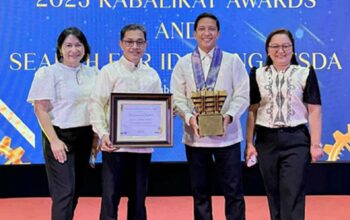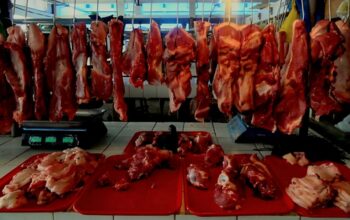
TAGBILARAN CITY, Bohol (PIA) –As the review of reclamation projects nationwide continue to make a stir, the Regional Development Council 7 (RDC-7) in Central Visayas also looked at its regional development plans and proposed further action to keep the balance of damaging critical marine ecosystems and economic benefits in the light of disaster mitigation and hastened climate action.
During its Full Council meeting December 7 in Bohol, the regional council manifested its support to the Department of Environment and Natural Resources (DENR) in reviewing all reclamation projects nationwide, and stretched further to possibly arrest the potential damage of four implemented reclamation projects in the region.
Through the RDC Economic Development Committee, the council also pushed for the conduct of a cumulative impact assessment and resilience analysis for the region’s remaining 11 reclamation project applications without area clearances based on DENR guidelines prior to processing for approval the regular monitoring of environmental compliance of the four reclamation projects with issued area clearances.
These four reclamation projects which have obtained area clearances are the 24.9795 hectare Cebu South Harbor and Container Terminal Port Facility Project (San Roque and Tangke, Talisay City, Cebu), the 1.7715 hectares Rehabilitation and Improvement of Rizal Boulevard (Poblacion, Dumaguete City, Negros Oriental), the 100 hectare Minglanilla Reclamation and Land Development Project (Tungkil; Tulay and Calajo-an, Minglanilla, Cebu), and the 131 applied but only 96.7 hectares issued with area clearance Global City Reclamation Project (Umapad and Paknaan, Mandaue City, Cebu).
The other 11 reclamation projects which have not been issued area clearances are: the 115 hectares of Mandaue Reclamation Project (Looc; Subangdako and Centro, Mandaue City, Cebu), 235 hectares of Seafront City Reclamation Project (Tayud, Consolacion, Cebu), 24 hectare New Cebu International Container Port (Tayud, Consolacion, Cebu), 203 hectare Lapu-Lapu City Reclamation Project (Canjulao and Punta Engaño, Lapu-lapu City, Cebu).
The 254 hectare Cordova Reclamation Project (Alegria; Catarman, Poblacion and Catarman, Lapu-lapu City, Cebu), 15 hectare San Fernando Port Project (Poblacion South; Poblacion North and San Isidro, San Fernando, Cebu), 400 hectares of Mactan North Reclamation and Development Project/Mactan Cebu Ocean City (Punta Engaño, Lapu-lapu City, Cebu).
The 1500 hectare Cordova SM Reclamation (Buagsong, Cordova, Cebu), 2.85 hectare Mantawi Harbour Esplanade (Subangdako, Mandaue City, Cebu), 11 hectare Toledo Waterfront-Urban Development Project Reclamation Project (Poblacion Toledo City, Cebu), and the 6.33 hectare Proposed Reclamation Project in Brgy. Canjulao, Lapu-Lapu City.
Observers see the RDC move as accelerating climate action and strengthening disaster resilience in the region by protecting and safeguarding the remaining key biodiversity areas and ecosystems here.
In the resolution of support, the RDC, led by Gov Erico Aristotle Aumentado also resolved to establish livable communities by conducting data collection and assessment of land and urban carrying capacities of LGUs and strengthening the enforcement of environmental laws.
Even if the botched Tagbilaran City’s deliberations of the unsolicited 133 hectare reclamation plan pushed through, it could hardly pass muster, with the DENR review.
In its resolution approved last RDC Full Council Meeting December 7, RDC’s Economic Development Chair Melanie Ng presented the resolution adding that various groups have expressed opposition against the ongoing reclamation projects in Manila Bay due to its irreversible damage to marine ecosystems and livelihood of people living along the coast.
It may be recalled too that President Ferdinand “Bongbong” Marcos, Jr. made a verbal declaration last August 7, 2023 suspending all Manila Bay projects.
Earlier, on July 25, 2023, DENR Secretary Maria Antonia Yulo Loyzaga, in a press statement said the Supreme Court mandamus ruling on Manila Bay must be taken into account in all reclamation projects within the historic water body, while emphasizing that “reclamation is an environmental issue that must be addressed from a lens that considers the inter-sectionality between ecological dynamics, socioeconomic and built environments, and the costs and benefits of these activities, and reclamation decisions must consider interactions between land, air and sea—and the multitude of environmental factors from physics and chemistry of water, biodiversity, and the demand for sources of food, power and water.”
The government’s environment department pressed the nationwide review during their Senate Budget Deliberation for FY 2024 DENR Budget Proposal October 4. (rahc/PIA7/Bohol)



